Pros and cons of Bibo eggplant and a guide to growing it
Growing eggplant - it’s a painstaking and time-consuming task. This culture is capricious and requires constant care. However, the Bibo f1 hybrid is unpretentious in care and at the same time highly productive. White color its fruits attract many gardeners.
Let's consider how to grow this crop so that the effort and time spent are rewarded with a rich harvest of delicious vegetables.
Description of culture
Bibo is a first generation hybrid. It was created by breeders of the Dutch company Monsanto. In 2008, the culture was included in the State Register of the Russian Federation.
Hybrid f1 adapts well to unfavorable conditions, temperature changes, and is relatively resistant to diseases and pests. All this contributes to high productivity. The vegetable is grown both in the south of Russia and in the north.
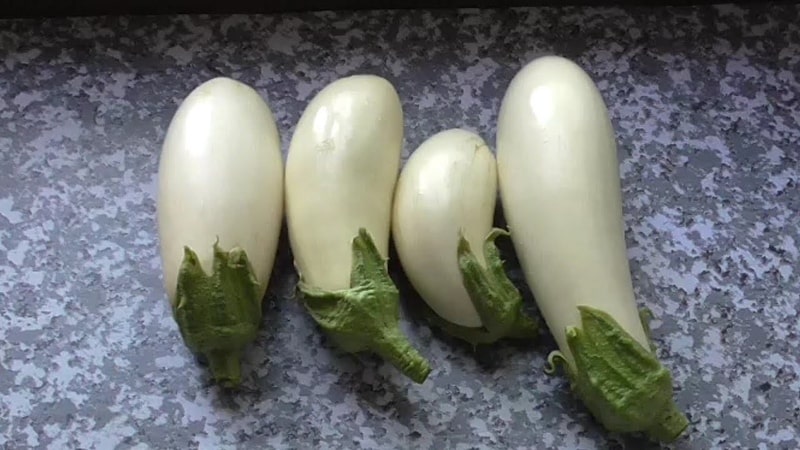
Distinctive features
Plants have the following features:
- short internodes, facilitating the formation of a large number of ovaries;
- early and rich harvest;
- powerful root system.
Vegetables grow quickly (75–90 days after the appearance of the first shoots), take root well and bear fruit in any conditions. Productivity reaches 4.8 kg per 1 m2, and the harvested fruits are stored for a long time.
Characteristics
This is an early-ripening crop, resistant to fusarium and tobacco mosaic. The bushes are semi-spreading, the leaves are green with wavy edges. The stem is medium thick, slightly pubescent. The flowers are purple and small in size.
Features of the fruit:
- oval-conical shape, smooth;
- the skin is dense, tender, elastic, white, and has a slight shine;
- the pulp is white, dense, not bitter;
- fruit weight - from 190 to 210 g (there are more);
- diameter – 7–8 cm, length – 15–18 cm;
- excellent taste;
- versatility in cooking.
How to grow your own
It is not difficult to cultivate Bibo f1 eggplants. It is important to follow certain rules at all stages of caring for them.
Growing seedlings
Seedlings begin to grow 2 months before planting - in February-March. Hybrid seeds are usually already processed by the manufacturer, but if there is no corresponding mark on the packaging, the material is prepared for sowing independently. First, they are soaked in a saline solution and the floating grains are removed. Then they are treated with a weak solution of potassium permanganate for disinfection.
After the preparation stage, the seeds are planted. Basic growing rules:
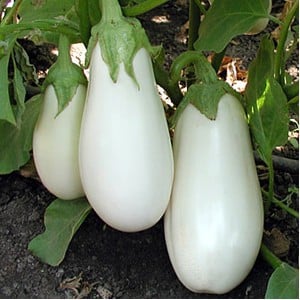
- For seedlings, use separate containers with a volume of 400–450 ml.
- The soil chosen is loose and nutritious (chernozem and peat with sand, soil with vermicompost are suitable).
- Maintain a temperature of +20...+25 °C, otherwise the seeds will not germinate. If the indicators are correct, sprouts appear after 10 days.
- Water the seedlings only with warm water.
- With the appearance of the first sprouts, the containers are transferred to a warm, illuminated place.
- With the first leaves the crop is fertilized.
Transfer
The beds are chosen on an illuminated hill. Mineral fertilizers are applied to the soil. In the fall, compost or manure is added: 1 bucket of fertilizer per 1 m2.
To transplant to a permanent place, dig holes 10–15 cm deep and pour warm water or mullein solution into them.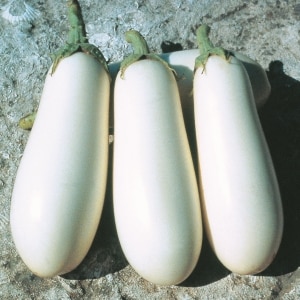
Bushes with 4-5 leaves are replanted in cloudy weather, at +14...+15 °C (in May–June). For the first 3 days they are protected from sunlight.When transplanting into a greenhouse, older seedlings are used - with 5-6 leaves.
Planting pattern: the distance between rows is about 65 cm, between plants - about 35 cm. There are 4–6 bushes per 1 m2. If you plant them closely, the harvest will be poor. Sowing depth - no more than 2 cm.
In open ground, Bibo f1 is grown under film covers. During the period of fruit formation, they are tied to a vertical support.
Important! Good culture precursors are carrots, melons, legumes, dill and lettuce.
Further care
Bibo eggplant responds well to fertilizers and produces a rich harvest. If the seedlings are greenhouse, more fertilizing is required (3-4 times per season):
- For the first time, fertilize with nitrophoska 14 days after planting (50 g per 5 liters of water, water 1 liter per bush).
- The next feeding is before flowering begins. Use Kemira or Kristalon.
- The same compounds are used to fertilize at the stage of ovary formation.
- The last fertilizing with phosphorus and potassium is applied after the first fruits are collected and repeated after 2 weeks.
Features of cultivation and possible difficulties
The crop tolerates temperature fluctuations well, but for better yields in the northern regions it is grown in greenhouses or under film cover.
Important! The soil should always be moist. Water the beds 2 times a week to prevent the formation of a crust on the surface of the soil.
Basic rules of irrigation:
- water the crop abundantly during the period of flowering and formation of ovaries;
- after each moistening, loosen the soil;
- The bushes are sprayed with pest repellents.
Loosen the soil carefully, without touching the roots. Otherwise, the eggplants may die.
Diseases and pests
Bibo eggplants, like many vegetable crops, suffer from the Colorado potato beetle, spider mites and aphids.
Tips for controlling insects: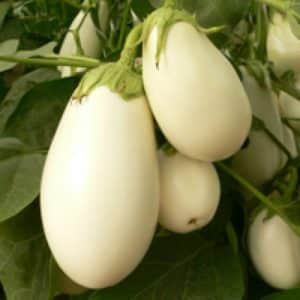
- Insecticides are used against pests, which quickly decompose in the ground. This way there will be less harm to vegetables.
- If slugs appear, they are removed manually. A mixture of lime, ash and tobacco dust is scattered between the beds.
- For prevention, basil, calendula or marigolds are planted next to eggplants. Their smell repels pests.
Bibo is resistant to fusarium and tobacco mosaic virus, but is susceptible to late blight, a fungal disease that appears when there is excess moisture. For treatment, use Bordeaux mixture, copper sulfate solution or the drug "Antrakol".
Important! After processing, the fruits can be consumed only after 10 days.
Excess liquid causes blackening of the stem and death of the plant. Therefore, it is important to follow the watering schedule and monitor soil moisture.
Harvesting and application
From emergence to harvest, 100–120 days pass. The crop produces its first fruits in August–September.
Important! The strong stem of the eggplant is not torn off, but cut off with pruning shears at a distance of 4-5 cm from the base of the fruit.
Bibo fruits contain potassium, calcium, phosphorus and iron, so they are useful for preventing heart disease, anemia, and strengthening the skeletal system.
Eggplants are widely used in home cooking: cooked on the grill, in the oven. They are used to make casseroles, side dishes, snacks And preparations for the winter.
Advantages and disadvantages
The hybrid has many advantages: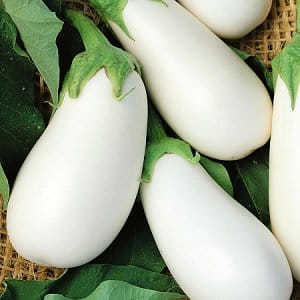
- possibility of growing in open ground and greenhouse;
- high yield;
- ease of care;
- resistance to certain diseases;
- lack of bitterness in the fruit pulp;
- good transportability;
- long-term storage.
Disadvantages of culture:
- bushes need to be tied up;
- The seeds collected from the hybrid do not have the qualities of the previous generation, so they are purchased every year.
Reviews
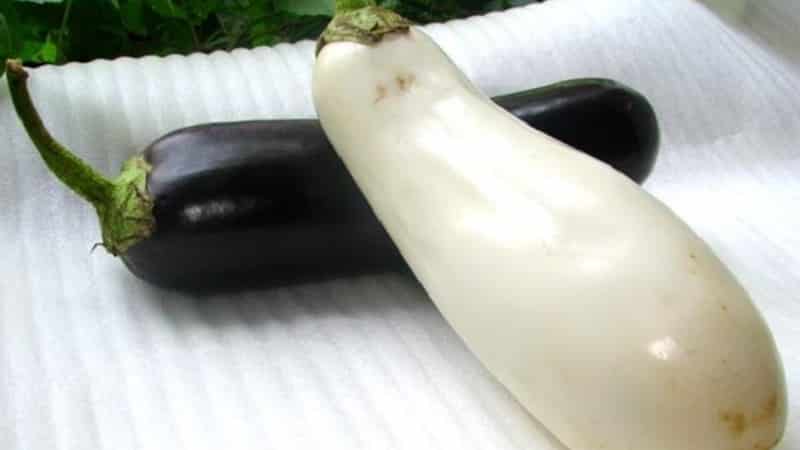
Many gardeners have been growing Bibo f1 for several years now. Here are just some reviews:
Svetlana Suleymanova, Orenburg: “I really like growing these particular eggplants. They ripen earlier than others, so we gather them with the whole family and enjoy the taste.”
Andrey Lipnitsky, St. Petersburg: “I’ve been planting Bibo for 4 years now: it has many advantages (early harvest, unpretentiousness, taste). I also like the white color of eggplants, as in the photo, although many people I know are surprised by it.”
Alisa Semenova, Tyumen: “Bibo eggplants make wonderful dishes. I especially like making vegetable casserole - my kids and husband are delighted!”
Conclusion
Growing eggplants in the garden is labor-intensive, but with the Bibo hybrid the process is simplified. The crop does not require constant care and is resistant to adverse weather conditions, so it is grown both indoors and outdoors. The high yield of large and tasty white fruits (up to 4.8 kg per m2) will please many. The vegetable pulp is not bitter and is universal in cooking.